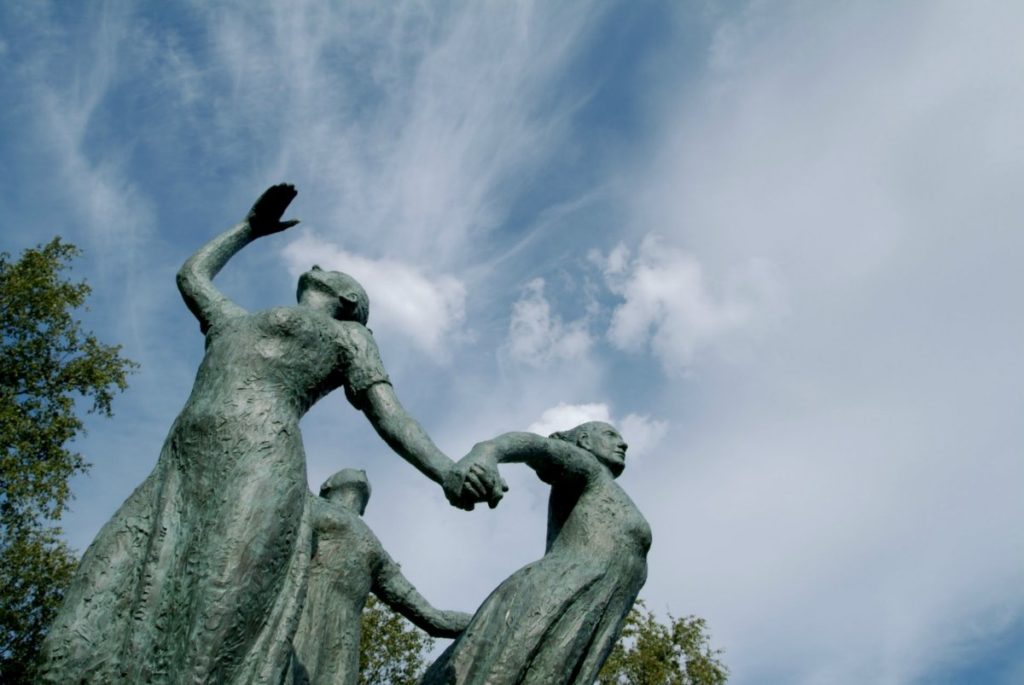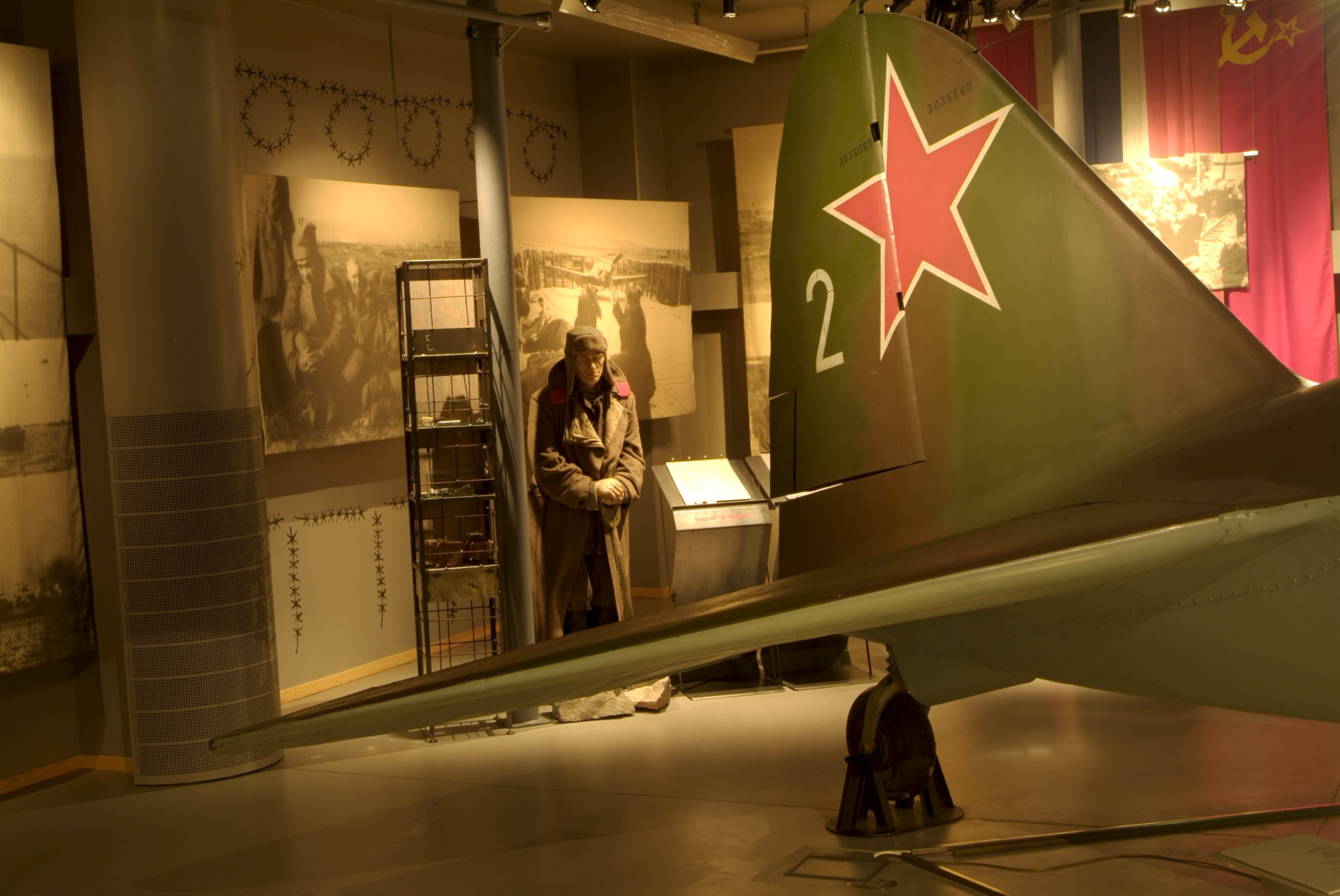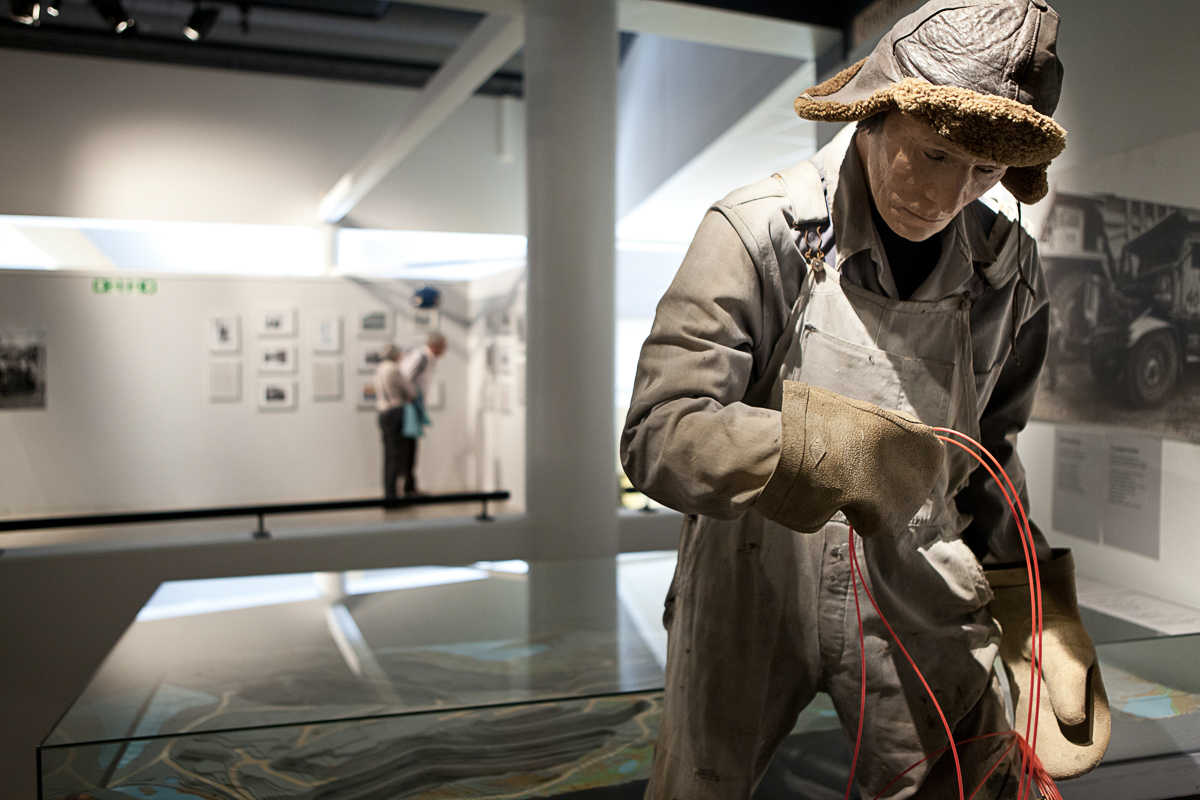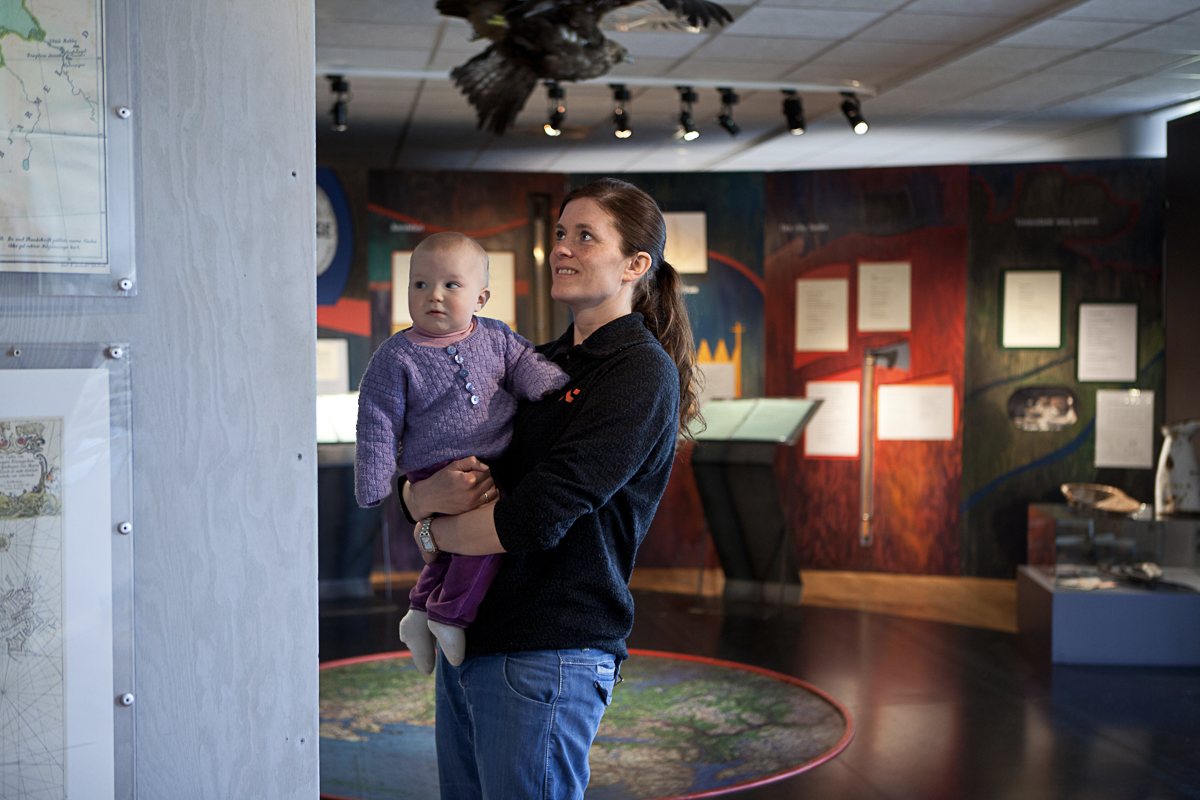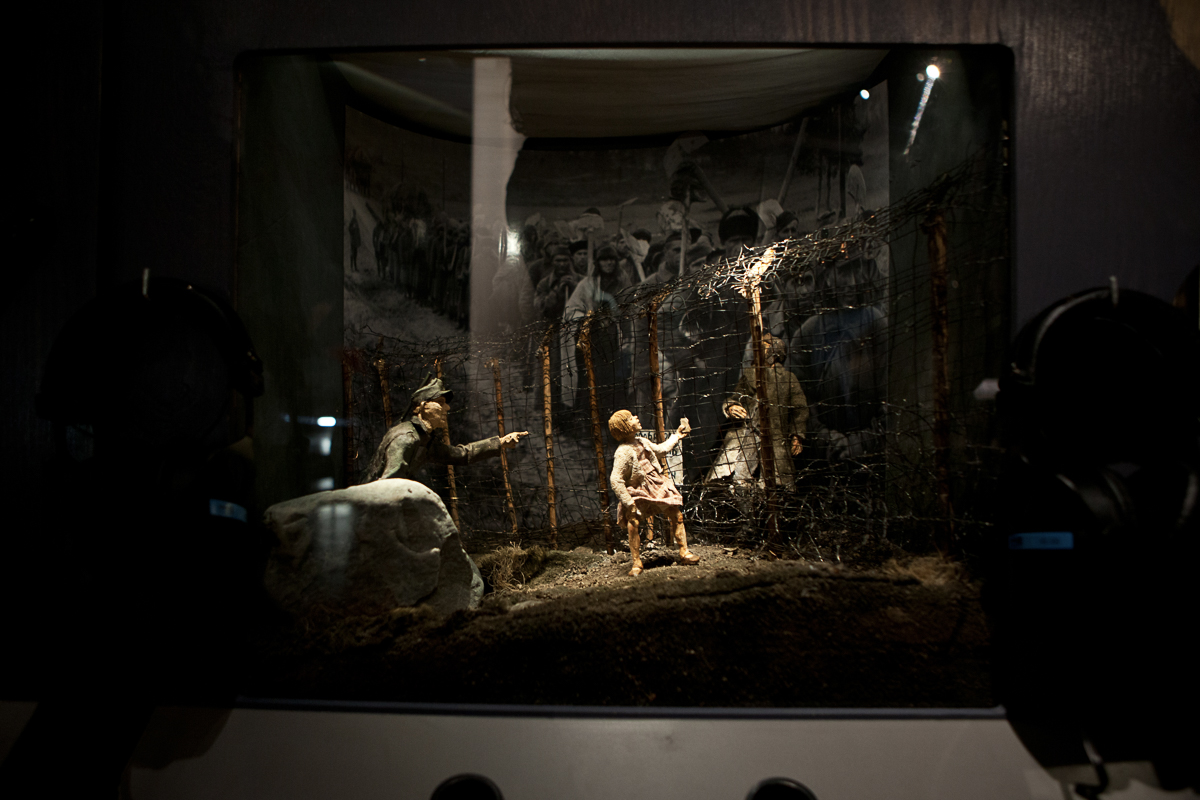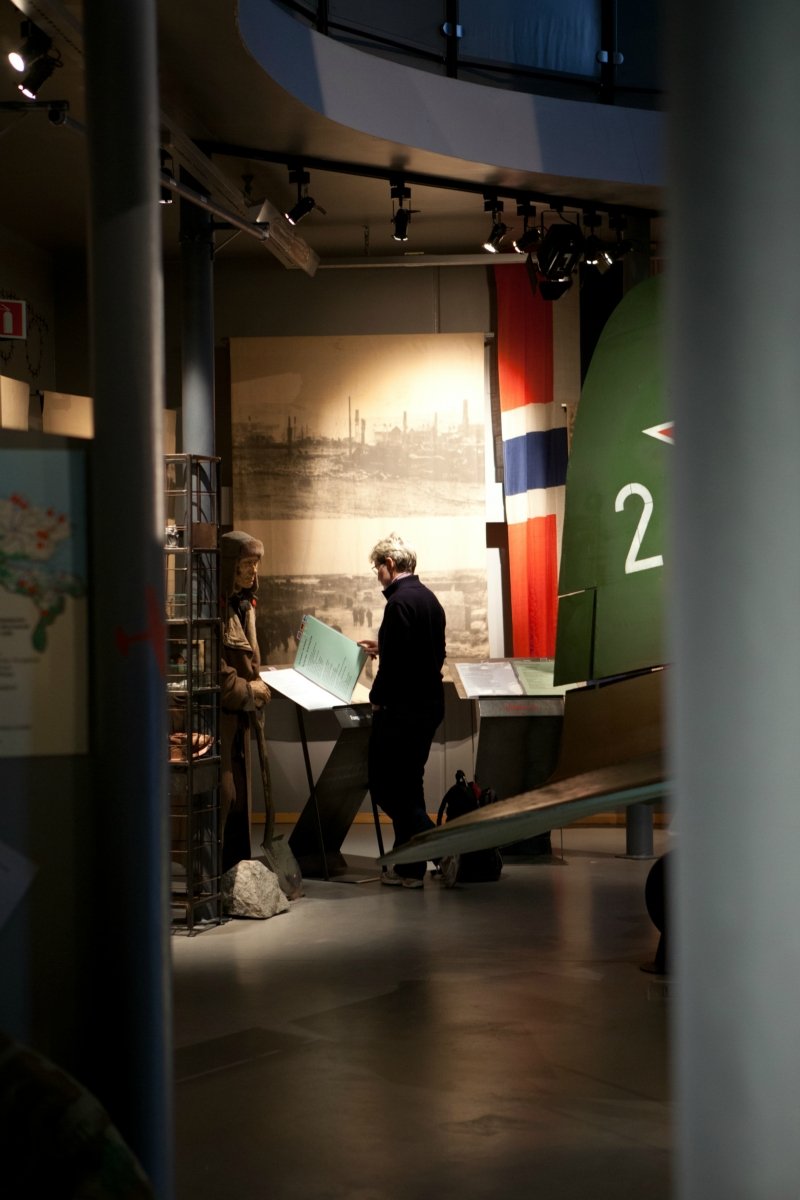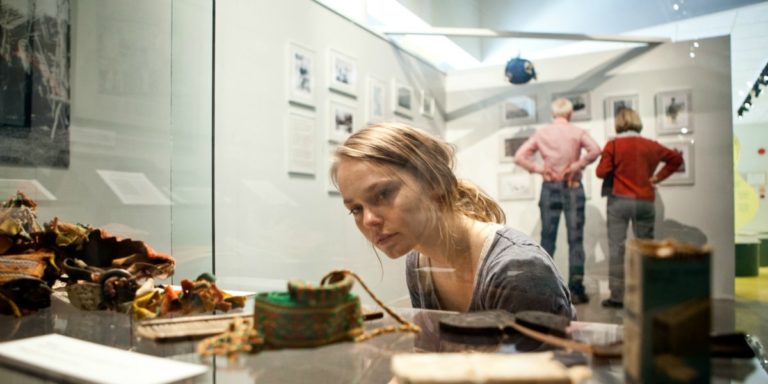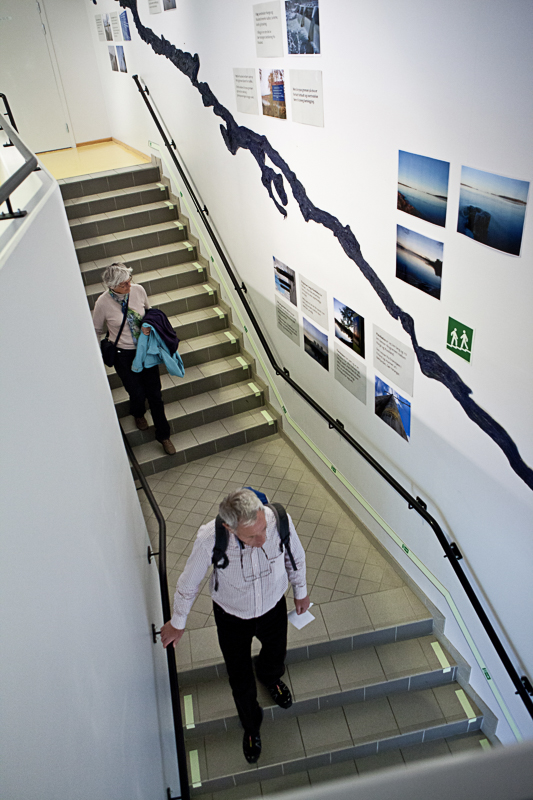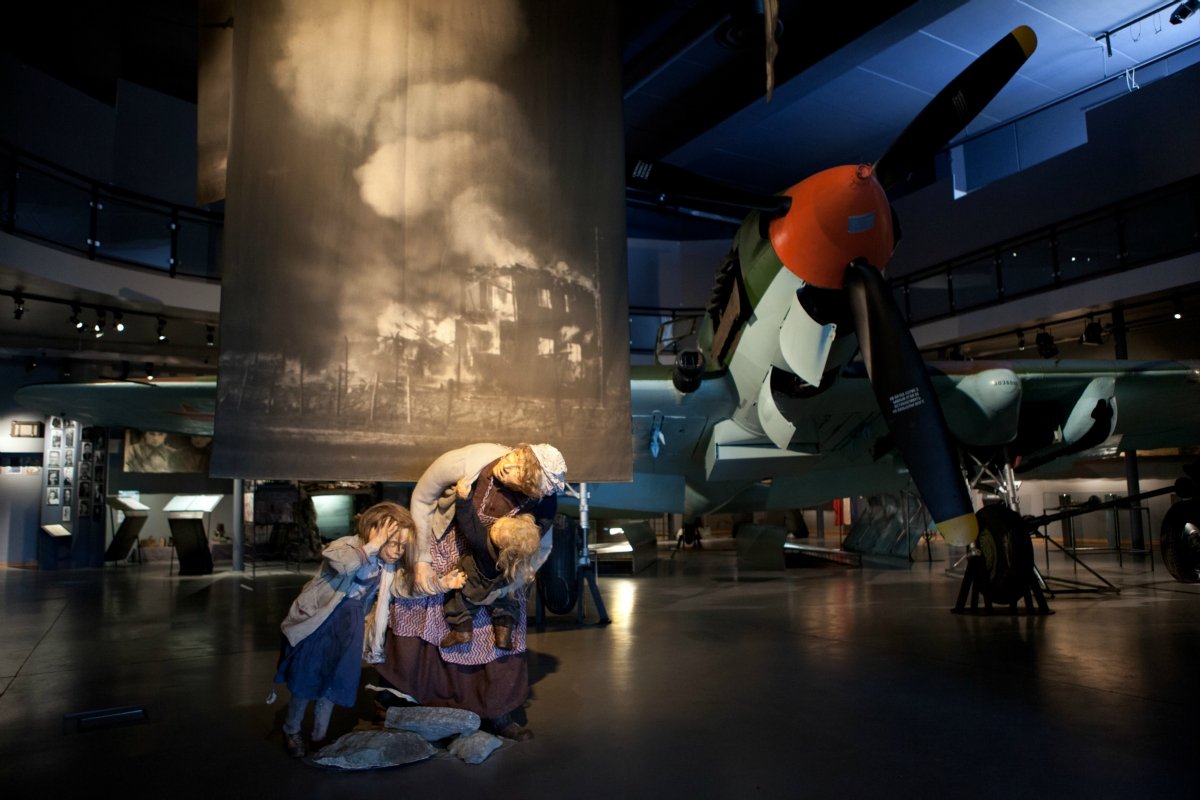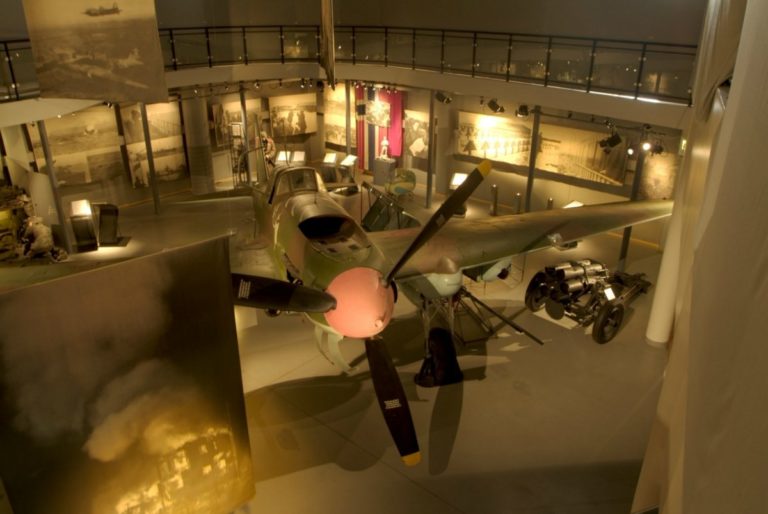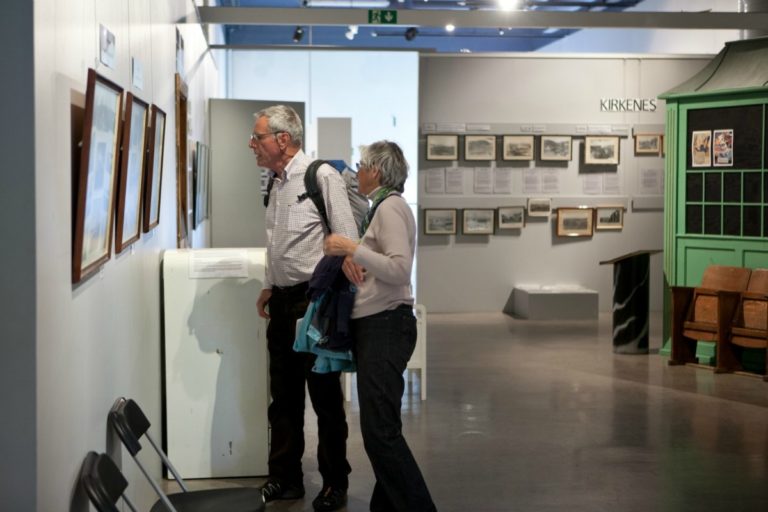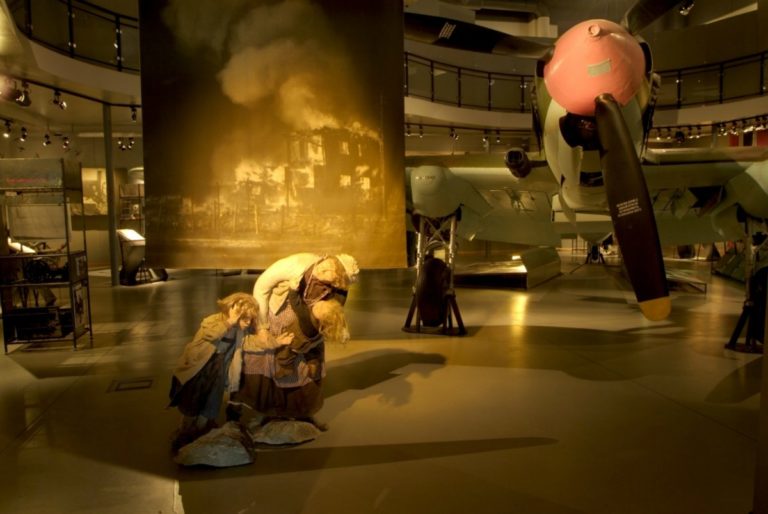160,000 soldiers, 10,000 civilians, 1000 air raid sirens and 328 air raids: the theatre of war in Sør-Varanger during the Second World War was played out on a grand scale. Everything is explained at the Borderland Museum (Grenselandmuseet) in Kirkenes, with an emphasis on how people experienced the events as they unfolded.
The focal point of the exhibition at Borderland Museum is a Soviet military aircraft, an Ilyushin IL2M3M. During the fighting around Kirkenes in October 1944, the aircraft had to carry out an emergency landing on a lake. The pilot successfully landed the aircraft, but the rear gunner died when ejected from the aircraft at low altitude. The pilot managed to get back to the Soviet lines, while the aircraft sank to the bottom of the lake. The aircraft was discovered in 1947, and in 1984 it was returned to the Soviet Union. When Borderland Museum was opened, the aircraft was donated as a gift from Russia and the exhibition was built around it.
Kirkenes was a front line town
In the spring of 1941, Nazi Germany attacked the Soviet Union during an offensive codenamed Operation Barbarossa. From Kirkenes in occupied Norway, German forces advanced towards Murmansk. However, they were stopped a few tens of kilometres inside Russia at the river Litsa, and here the front line remained static for over three years. Sør-Varanger became a concentration area, and up to 160,000 German soldiers lived in the municipality along with 10,000 inhabitants.
Practical information for the Borderland musum, Kirkenes
Kirkenes lies in the far north east of Norway close to the border with Russia. The museum is located just outside of town next to a large lake and is heavily signposted.
It takes around 30mins to walk from the centre of Kirkenes from the Hurtigruten terminal. If driving it only takes around 5 mins to get there from the centre. If driving in to Kirkenes from out of town simply follow the E6 until you hit a roundabout by the large welcome to Kirkenes sign. Then take the first right to the signposted museum.
The museum is the main building there, however underneath is the John Savio museum with some of his famous works on display.
Visit Kirkenes has all the information you need about visiting this city tucked away in the far north east.
Air raids were frequent and devastating
From 1943 onwards, when the Soviet Union became more aggressive, Kirkenes became the target for more and more Soviet air raids. The local population sought refuge in Andersgrotta, a temporary bomb shelter in the centre of the town. The air raid siren sounded over 1000 times and 328 air raids took place.
Partisans lived a balancing act of aliances
Young men from the Finnmark coast signed up to join the Red Army. They escaped across to the Rybachy Peninsula on the Kola Peninsula, and were trained in espionage. They were then stationed at observation posts along the Finnmark coast, from where they reported German shipping traffic and military activity back to the Soviet Union. They lived in very basic conditions, and had no contact with the civilian population or their families. After the Second World War came the Cold War, the conflict with the Soviet Union, and many of the partisans were suspected of being communist sympathisers.
Dagny Loe’s blanket is proudly on display
Dagny Loe was a young woman in the Norwegian county of Berlevåg. Her husband was a partisan. He was seized by the Germans and executed in Kirkenes. Dagny was sent to several camps in Germany and Poland. With her, she took a blanket on which she embroidered the names of the camps she was sent to. She did not believe she would survive, but she returned home unscathed to Berlevåg with her blanket. Some years later, she gave the blanket to Borderland Museum, where it is now prominently displayed.
The population of the town fled to the mines
In autumn 1944, the Germans were unable to hold the lines at the Litsa front. As the fighting drew nearer, the local population of Kirkenes fled to the mines at Bjørnevatn. Between 2000 and 3000 people lived in these mines for two to three months, and 11 children were born in the mine tunnels. At last, on 24 October 1944, Kirkenes was the first part of Norway to be liberated when the Red Army ousted the German occupying forces.
The Svænskonga were the lucky ones
Life in the ruined town of Kirkenes after the war was tough and characterised by a lack of even the most basic necessities. In autumn 1945, many children from Kirkenes were sent to Sweden in order to “fatten up” with Swedish families, the so-called “svænskonga”. Some of them enjoyed living there so much that they never returned to their temporary homes in Kirkenes; while many coped well, others suffered terribly. The children returned by ship, and arrived back in Kirkenes on 17 May 1946, making the celebrations unforgettable.
It is a different kind of war museum
Topics such as the Soviet prisoners of war, deported teachers and many other fascinating stories are brought up at Borderland Museum (Grenselandmuseet). It is a long way from being a traditional war museum with uniforms, weapons and maps of front lines. The focus is very much on the people in the firing line, and with a few quick brushstrokes, the Borderland Museum paints a fascinating picture of how the war unfolded in Sør-Varanger.
Other exhibitions can be seen here
The exhibition on the Second World War probably attracts the most interest. However, other exhibitions should not be overlooked. As Kirkenes is one of the gjenreisningsbyer (reconstruction towns), it is interesting to see the photographs of doctor’s wife Ellisif Wessel dating from the last century. Her photographs show a small town undergoing rapid development, as well as the ethnically complex population. There is also an exhibition on the mines of Bjørnevatn. The independent John Savio museum is also located in the town.
